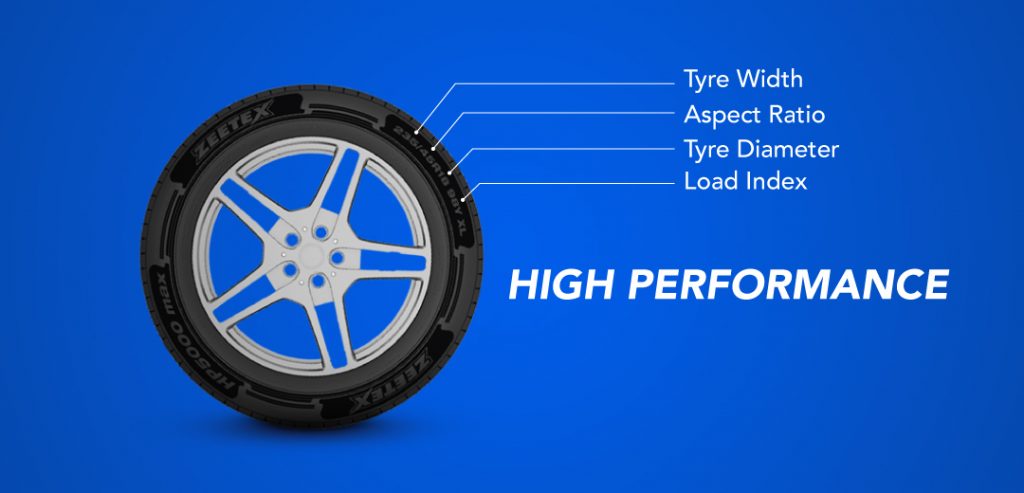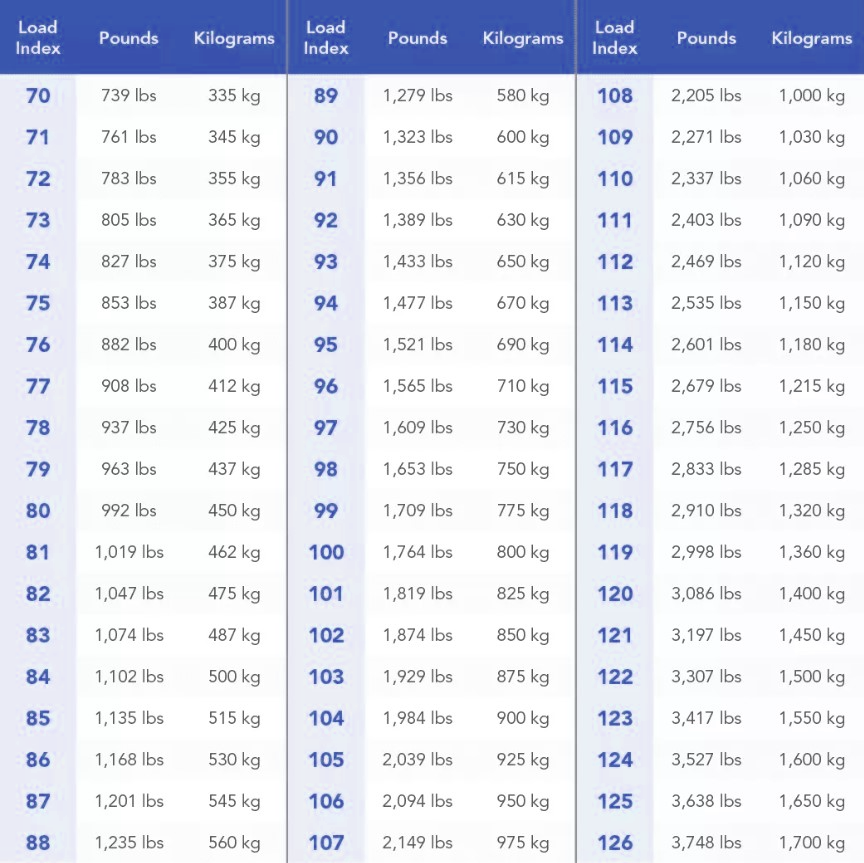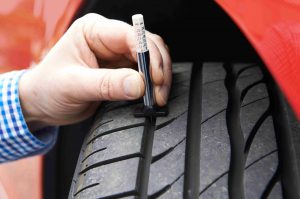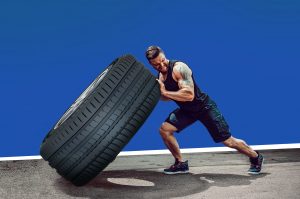If you are planning a family vacation or helping a friend move with a loaded car, it’s essential to know how much weight your tires can support. Car tires are designed to carry specific weights, and it’s crucial to understand your tire size and not exceed the load capacity of your tires. Unfortunately, the tire load capacity is often overlooked.
Along with tire size and speed rating, the tire load index is a critical factor to consider when purchasing new tires. Understanding the load index will help you avoid blowouts, tire damage, and potential accidents.
The tire load index is a rating that reflects your tire’s load-carrying capacity at maximum air pressure. This score tells you whether your vehicle can handle the necessary weight, and the higher the number, the greater the capability.
It’s important to note that the number is not the weight the tire can carry but rather an index or representative indicator of the weight it can handle. To find out the load capacity of your tires, consult our helpful tire load rating chart.
How do I find the tire load index on my tires?

The load index number is often located on the sidewall of your tire. It’s usually the final number on the sidewall, followed by a letter that represents the speed rating. You can also check your car’s handbook to locate the tire load index.
For example, if your tire measures 235/55 R18 and has a load index of 100, it can carry up to 1764 pounds, as shown in the chart below. If your car has four tires with a load index of 100, the maximum load it can safely transport is 1764 times 4 pounds, or 7056 pounds.

If the combined weight of your car’s four tires is less than or equal to the gross vehicle weight, the tires won’t be able to support the weight of the vehicle, which can impact safety. It’s crucial to meet the load index of your tires with the one advised by the designer of your vehicle.
Avoiding Overloading with Tire Load Capacity Index

It’s a legal requirement not to exceed the specified tire load capacity. The relative load capacity indication is also affected by your vehicle’s speed and tire pressure. Driving at high speeds with heavy loads places significant strain on the tires.
If the weight gets too large, the tires might be destroyed, and other factors such as tire lifespan can come into play. However, by remaining within the load capability of your tires, you can minimize damage caused by excess loads.
The authorized tire load capacity must not be exceeded by law, and you eliminate the chance of tire damage. Driving at fast speeds with large loads places a lot of stress on the wheels, and the tires may suffer damages if the load increases too much. Here, other variables frequently come into play, including tire longevity. However, one thing is for sure: adhering to your tire’s load capacity can prevent damage inflicted by extreme loads.
While increasing the air pressure by 0.1 bar raises the tire’s load index by one value, it’s crucial not to exceed the suggested guiding value because it can alter driving behavior.
The Role of Tire Load Index in Off-Road Driving
For off-road enthusiasts, understanding tire load index is even more crucial. When navigating challenging terrains, the weight distribution in the vehicle can shift significantly, placing additional stress on the tires. Selecting tires with an appropriate load index for off-road driving can help maintain stability, prevent tire damage, and ensure a safe and enjoyable off-road experience
Selecting Tires Based on Load Index

When changing your tires, always select tires that have a load index rating equal to or greater than the Original Equipment (OE) tires. The automaker’s recommended load rating can be found in the owner’s handbook or on a placard on the driver’s side door jamb if your vehicle doesn’t have its original equipment tires.
Due to legal concerns, the majority of tire installers won’t sell or install tires with a lower load rating than the OE guideline. This is due to the increased likelihood of overloading your tires if you install tires with a lower load index value. Tires that are overloaded are more likely
In conclusion, understanding and adhering to the correct tyre load rating is critical for safe and efficient driving. By doing so, you can avoid potential hazards such as blowouts, structural damage, and premature tyre wear. Regularly checking and maintaining the air pressure in your tyres can help increase their load capacity, but it’s important to never purchase tyres with a carrying capacity lower than the original equipment. Whether you’re driving a passenger car or a truck, choosing high-quality tyres like Zeetex can ensure a smooth and safe driving experience.




